本文转自《SPE》上发表的题为“Carbon Capture, Utilization, and Storage: Do We Have a Choice?”的文章
作者:Mohan Sharma, Resoptima
日期:2019.12.06
原文链接:https://pubs.spe.org/en/twa/twa-article-detail/?art=6326&mkt_tok=eyJpIjoiTXpJMFlqUmxPRE00TkRsbSIsInQiOiJEXC9XOWhSU3dLM3FxUVVGM3Y1eW5NRTRVb0pLVEFkUGErd2FSUmlBZGxhVnBEMjlZMUhWTmFFbGlGd25XSjNsalppOGFCTWJnMDZvcm5ERlp3OFN1QXJWcWg4R0U3Rmt1Vmg0WHEyc2d5enpVbkJkYUI2Y0VpRDBUczJiVUlXTWEifQ%3D%3D
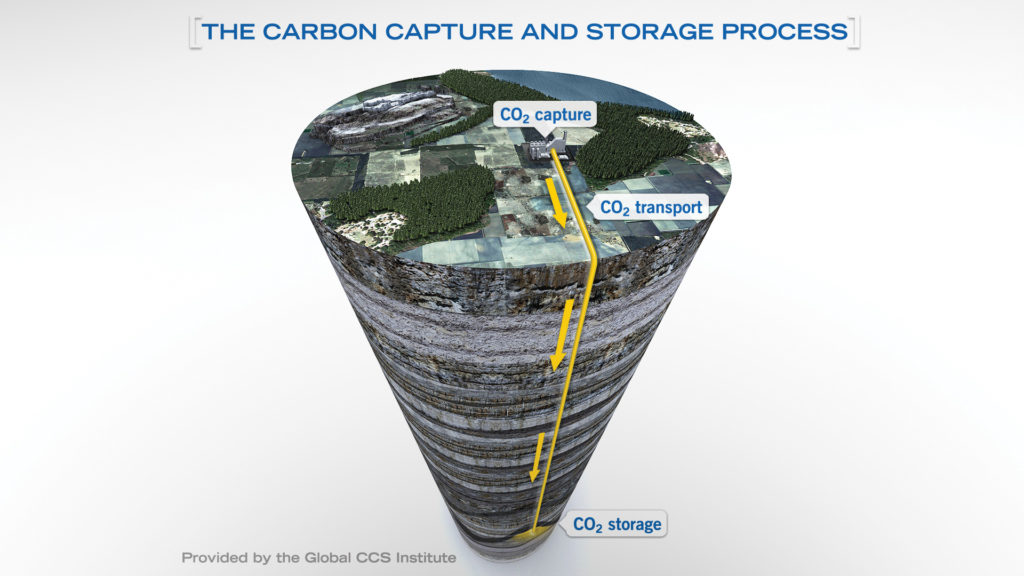
The global need for energy continues to rise with energy consumption expected to increase by 30% from now until 2040. Most of this increase in energy demand is anticipated to come from non-OECD countries, especially China and India, because of strong economic growth. The industrial sector, which includes manufacturing and construction, will account for more than 50% energy demand over this projection period. Although renewable energy and nuclear power are the fastest growing forms of energy, fossil fuels are expected to continue meeting most of world’s energy demand until 2040. Out of all the fossil fuels, oil will remain the largest source of energy, providing one-third of the world’s energy demand through the projection period. This poses a challenge to providing sustainable and cleaner energy at the same time.
从现在起到2040年,全球能源需求将继续增长,能源消耗预计将增长30%。由于强劲的经济增长,能源需求的增长大部分预计将来自非经合组织国家,尤其是中国和印度。 在此预测期内,包括制造业和建筑业在内的工业部门将占能源需求的50%以上。 尽管可再生能源和核能是增长最快的能源,但预计化石燃料将继续满足世界上大多数能源需求,直到2040年。在所有化石燃料中,石油仍将是最大的能源,提供三分之一的能源。 预测期内的全球能源需求。 这对同时提供可持续和清洁能源构成了挑战。
The dependence upon fossil fuels has caused a rapid increase in carbon dioxide (CO2) emissions since the industrial revolution. This has resulted in atmospheric CO2 concentration to increase from 300 ppm in 1950s to 410 ppm this year (Fig.1), already causing 1°C of temperature increase above preindustrial levels. This increase has disrupted the global carbon cycle, and the signs of global warming are becoming more pronounced around the world. In case of no action, the global temperature is expected to rise by 4.5°C above the preindustrial temperature level. This will play havoc on the environment, and will result in physical and ecological problems like sea-level rise, extreme weather events, disrupted water supply, and food shortage.
自工业革命以来,对化石燃料的依赖已导致二氧化碳(CO2)排放量迅速增加。 这导致大气中的二氧化碳浓度从1950年代的300 ppm增加到今年的410 ppm(图1),已经使温度升高了1°C,超过了工业化前的水平。 这种增加已经扰乱了全球碳循环,并且全球变暖的迹象在世界范围内变得越来越明显。 如果不采取任何行动,预计全球温度将比工业化前的温度水平升高4.5°C。 这将对环境造成破坏,并导致物理和生态问题,例如海平面上升,极端天气事件,供水中断和粮食短缺。
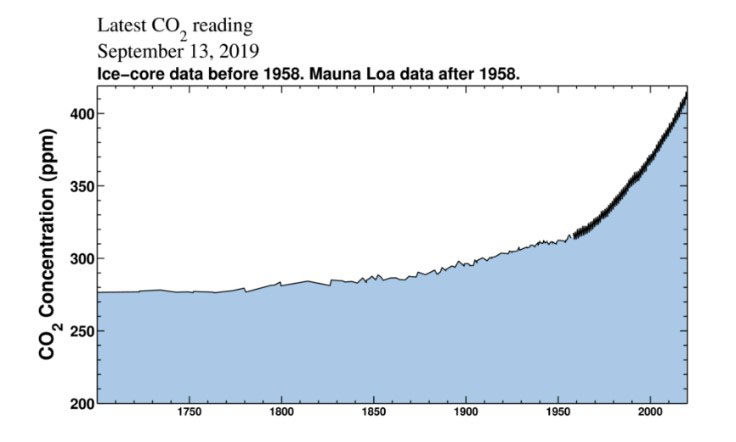
Fig. 1—Atmospheric CO2 concentration measured at Mauna Loa Observatory, Hawaii since 1958. Source: https://www.co2.earth/
图1-自1958年以来在夏威夷的莫纳罗阿天文台测得的大气CO2浓度。资料来源:https://www.co2.earth/
The world nations adopted a goal to limit warming to well below 2°C and to pursue efforts to limit the temperature increase to no more than 1.5°C at the United Nations Climate Change conference held in Paris in 2015, generally referred to as “Paris Agreement.” The agreement calls for reduction in emissions from 2020 onwards with an aim to achieve “net-zero” emissions in the second half of the century by striking a balance between anthropogenic emissions and removal by sinks. The Intergovernmental Panel on Climate Change (IPCC) published the Special Report on Global Warming of 1.5°C (SR15) on 8 October 2018. According to the report, with 1.5°C warming, the global mean sea level is projected to rise by 26 cm to 77 cm by 2100. A difference of 10 cm may correspond to 10 million more people living in coastal areas exposed to related risks.
在2015年于巴黎举行的联合国气候变化大会上,世界各国通过了《巴黎协议》,即将升温限制在2°C以内,并努力将温度升高限制在1.5°C以内。 该协议要求从2020年开始减少排放量,旨在通过在人为排放量与汇清除量之间取得平衡来实现本世纪下半叶的“净零排放”。 政府间气候变化专门委员会(IPCC)于2018年10月8日发布了关于1.5°C全球变暖的特别报告(SR15)。根据该报告,随着1.5°C变暖,全球平均海平面预计将从现今的26厘米上升到2100年的77厘米。相差10厘米可能意味着生活在沿海地区且面临相关风险的人口增加了1000万人。
Carbon capture, utilization, and storage (CCUS) is a solution that is capable of significantly reducing emissions from the use of fossil fuels in power generation and industrial applications. It involves technologies to remove CO2 from flue gas and atmosphere, transport it via ship or pipeline, then either use it as a resource to create valuable products or permanently store it deep underground in geologic formations. The carbon capture route depends primarily on CO2 source, and the techniques can be broadly divided into 3 categories: CO2 Absorption, CO2 Adsorption and CO2 Membrane Separation.
碳捕集,利用和封存(CCUS)是一种能够显着减少发电和工业应用中使用化石燃料排放的解决方案。 它涉及从烟气和大气中去除CO2,通过船或管道运输CO2,然后将其用作资源来生产有价值的产品或将其永久存储在地质构造的地下深处的技术。 碳捕获途径主要取决于CO2的来源,该技术可大致分为3类:CO2吸收,CO2吸附和CO2膜分离。
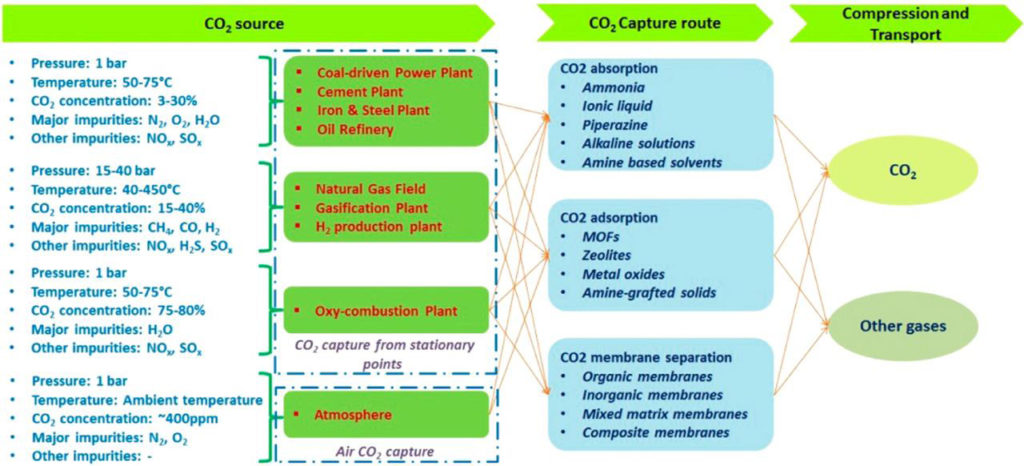
Fig. 2—Summary of the main CO2 sources and existing capture technologies. Source: Yuan, Z., Eden, M.R., Gani, R. Ind. Eng. Chem. Res. 2016, 55, 12, 3383-3419.
图2-主要CO2来源和现有捕集技术的摘要
Carbon dioxide can then be used as a value-added commodity for commercial purposes to prepare products such as plastic, textile, building material, and agricultural products. CO2 has been successfully used for enhanced oil recovery (EOR) in fields resulting in an additional oil recovery between 15% and 20% of oil initially in place. Fig. 3 shows a variety of possible locations where CO2 can be stored permanently. Different sites have been evaluated globally for storage potential with deep saline aquifers ranking highest out of all options (Table 1). At the end of the CO2 EOR project when the operation becomes uneconomic and the field is decommissioned, effectively all of the CO2 purchased during the project life gets stored, which is referred to as “associated” or “incidental” storage. CO2 EOR is likely the first techno-economic option for addressing the concern of climate change, until other technologies develop further and become more viable. CO2 storage in aquifers, in the context of CCUS, is referred to as “non-associated” storage to distinguish it from storing CO2 through EOR, as both occur in geologic formations.
二氧化碳可以用作商业用途的增值商品,以制备产品,例如塑料,纺织品,建筑材料和农产品。 CO2已成功用于提高油田采油率(EOR),从而使最初采出的石油量增加了15%至20%。图3显示了可以永久存储CO2的各种可能位置。全球对不同地点的储藏潜力进行了评估,其中深层盐水蓄水层在所有方案中排名最高(表1)。在CO2 EOR项目结束时,当操作变得不经济并且油田废弃时,有效存储了项目生命周期中购买的所有CO2,这被称为“关联”存储或“偶然”存储。在其他技术进一步发展并变得更加可行之前,CO2-EOR可能是解决气候变化问题的第一个技术经济选择。在CCUS的背景下,咸水层中的CO2储存被称为“非关联”储存,以区别于通过EOR储存CO2,因为两者都发生在地质构造中。
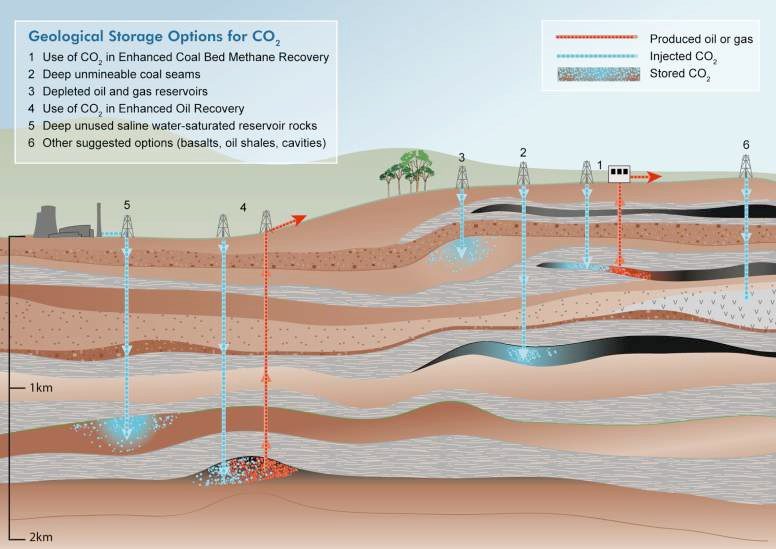
Fig. 3—Geologic storage options for CO2. Source: Intergovernmental Panel on Climate Change, Special Report - Carbon Capture and Storage [IPCC SR CCS].
图3-CO2的地质封存选项。 资料来源:政府间气候变化专门委员会,特别报告-碳捕集与封存[IPCC SR CCS]。

a These numbers would increase by 25% if "undiscovered" oil and gas fields were included in this assessment.
Table 1—Storage capacity for several geological storage options. Source: IPCC SR CCS.
a如果此评估中包括“未发现”的油气田,这些数字将增加25%。
表1-几种地质存储选项的存储容量。 资料来源:IPCC SR CCS。
Though engineered storage solutions are different from natural accumulations of CO2 that have been used for EOR in the USA for last 5 decades, CO2 injected at carefully selected site can be stored underground for 1000s of years. For injection in aquifers, CO2 gets trapped by a combination of four mechanisms in terms of increasing storage security (Fig. 4):
尽管工程存储解决方案与过去5年来在美国用于EOR的CO2的自然积累不同,但在精心选择的地点注入的CO2可以在地下存储数千年。 对于注入含水层,从提高存储安全性的角度来看,二氧化碳通过四种机制的组合而被捕集(图4):
(a) Hydrodynamic/structural/stratigraphic trapping, which occurs because CO2 being less dense than formation brine, rises buoyantly until it encounters a seal that has a capillary entry pressure greater than the buoyancy or hydrodynamic force.
(a)流体动力/结构/地层圈闭是由于CO2的密度低于地层盐水而发生的,因此浮力上升,直到遇到毛细入口压力大于浮力或流体动力的密封为止。
(b) Residual/capillary trapping, which occurs during the counter-current flow of CO2 and formation brine as CO2 migrates up. A relatively more wetting phase enters the pores previously occupied by less-wetting CO2 phase, resulting in CO2 trapping as discontinuous immobile phase.
(b)残留/毛细管捕集,这是在CO2和地层盐水随着CO2向上迁移而逆流期间发生的。 相对较多的润湿相进入先前由较少润湿的CO2相占据的孔中,导致CO2被捕获为不连续的固定相。
(c) Solubility/dissolution trapping, which occurs when CO2 comes in contact with formation fluid. Mass transfer occurs with CO2 dissolving into water until an equilibrium state is reached.
(c)当二氧化碳与地层流体接触时发生的溶解性/溶解性捕集。 传质发生于将CO2溶解到水中直至达到平衡状态。
(d) Mineral trapping, which occurs because the injected CO2 dissolved in formation brine reacts with formation rock, and gets converted into a stable mineral phase.
(d)矿物捕集,其发生是因为注入的溶解在地层盐水中的二氧化碳与地层岩石发生反应,并转化为稳定的矿物相。
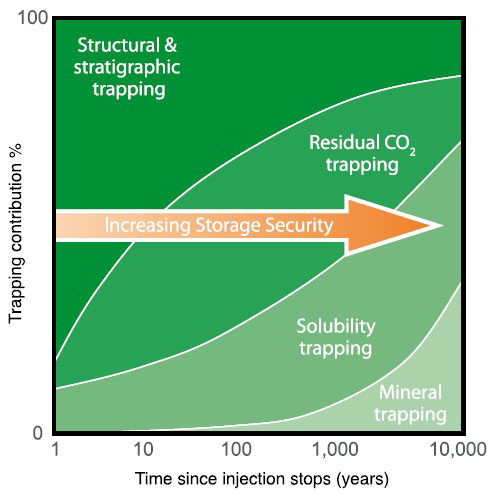
Fig. 4—Relevance of different CO2 trapping mechanisms with respect to time from injection. Source: IPCC SR CCS.
图4-不同CO2捕集机制与注入时间之间的相关性。 资料来源:IPCC SR CCS。
As per the International Energy Agency (IEA), CCUS is expected to contribute to 14% reduction in CO2 emission under the 2°C scenario (Fig. 5). In the “Beyond 2°C” scenario, CCUS will play a far significant role, and anticipated to reduce CO2 emissions by 32%. Without CCUS, the cost of achieving long-term climate goals will be 140% costlier, which is much higher than if other technologies are not available.
根据国际能源署(IEA),在2°C情景下,CCUS有望使CO2排放量减少14%(图5)。 在“超过2°C”的情景中,CCUS将发挥重要作用,并有望将CO2排放减少32%。 没有CCUS,实现长期气候目标的成本将高出140%,这比没有其他技术的情况要高得多。
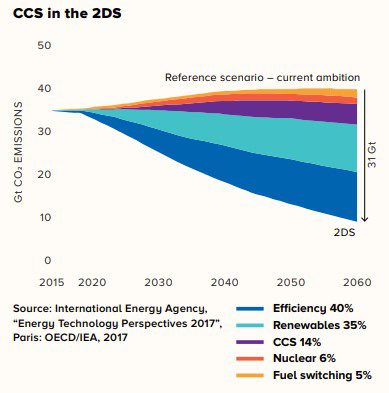
Fig. 5—Contribution of different technologies in CO2 emission reduction. Source: IEA.
图5-不同技术对减少二氧化碳排放的贡献。 资料来源:国际能源署。
Table 2 compares the current CCUS performance with respect to overall goal. The world will need 100s of storage sites by 2050 in order to reduce greenhouse gas emissions.
表2比较了相对于总体目标的当前CCUS绩效。 为了减少温室气体排放,到2050年,世界将需要100个存储站点。
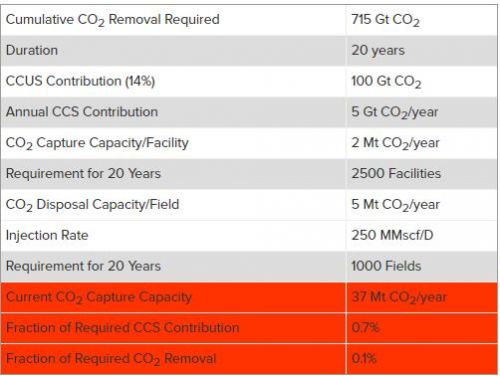
Table 2—CCUS Performance With Respect to Target. Data Source: Reports from IPCC, IEA, operators, and others.
表2-关于目标的CCUS绩效。 数据来源:IPCC,IEA,运营商和其他机构的报告。
There are around 30 small- and large-scale integrated CCS projects in operation or under construction (Fig. 6), including significant ones like the Boundary Dam power station in Canada, Petra Nova in USA, Sleipner and Snøhvit CO2 storage projects in Norway, Abu Dhabi CCS Project for EOR in UAE, and Tuticorin CCU Project in India.
大约有30个正在运行或在建的小型和大型CCS综合项目(图6),包括加拿大的边界大坝电站,美国的Petra Nova,挪威的Sleipner和SnøhvitCO2封存项目等重要项目, 阿联酋阿布扎比的CCS项目和印度的Tuticorin CCU项目。

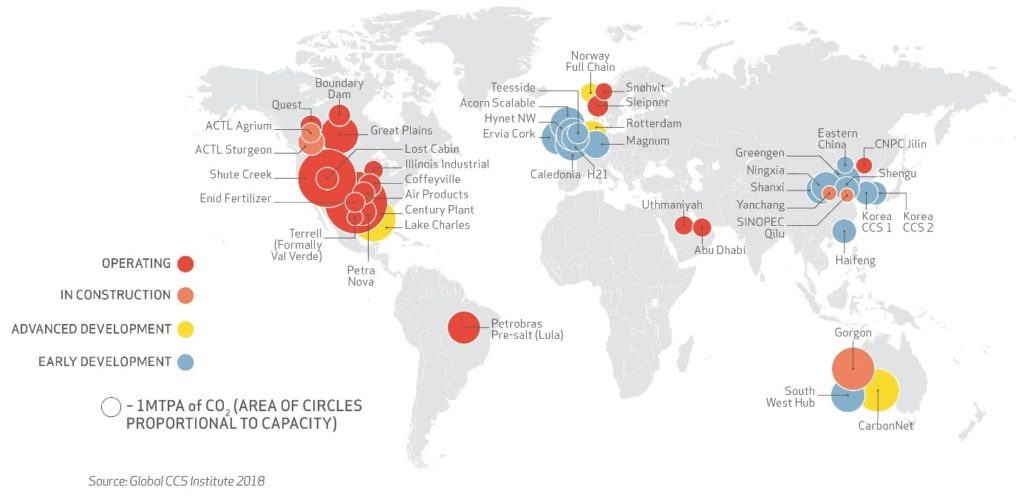
Fig. 6—Operating and planned CCUS projects worldwide. Source: Global CCS Institute. For an interactive map to see the various facilities around the world, click here: https://co2re.co/FacilityData
图6-全球范围内正在运营和计划中的CCUS项目。 资料来源:全球CCS研究所。 有关查看世界各地各种设施的交互式地图,请单击此处:https://co2re.co/FacilityData
It is taking long to mature and de-risk the technologies to reduce cost and ensure that there is no subsequent CO2 leakage from reservoir through seals or old wells, and CO2 migration within reservoir to be monitored in a techno-economic way. However, the common understanding worldwide is that CCUS is necessary to meet climate change mitigation goals at the lowest possible cost to society. A combination of tax incentives and research and development demonstration will be critical to accelerate technology development. We are moving at a slower pace, but steadily in the right direction.
为了降低成本并确保随后的CO2不会通过密封圈或旧井从储层泄漏,并且要通过技术经济的方式监测储层内的CO2迁移,需要很长时间才能使技术成熟和降低风险。 但是,世界范围内的共识是,CCUS必须以尽可能低的社会成本实现缓解气候变化的目标。 税收优惠与研发示范相结合对于加快技术开发至关重要。 我们的步伐较慢,但朝着正确的方向稳步前进。
 Mohan Sharma is a reservoir engineer with Resoptima and is based in Stavanger, Norway. He holds a PhD in petroleum technology from the National IOR Centre of Norway at University of Stavanger. He worked in an international collaboration between seven universities and five oil companies on a project demonstrating large-scale CO2 enhanced oil recovery and storage using a field pilot. Sharma holds an MS degree from Texas A&M University and a BTech degree from Indian School of Mines, both in petroleum engineering. He is an SPE member since 2010.
Mohan Sharma is a reservoir engineer with Resoptima and is based in Stavanger, Norway. He holds a PhD in petroleum technology from the National IOR Centre of Norway at University of Stavanger. He worked in an international collaboration between seven universities and five oil companies on a project demonstrating large-scale CO2 enhanced oil recovery and storage using a field pilot. Sharma holds an MS degree from Texas A&M University and a BTech degree from Indian School of Mines, both in petroleum engineering. He is an SPE member since 2010.
Mohan Sharma是Resoptima的一位储层工程师,总部位于挪威斯塔万格。 他拥有斯塔万格大学挪威国家IOR中心的石油技术博士学位。 他在七所大学和五家石油公司之间的国际合作中进行了一个项目,该项目展示了使用现场试点进行的大规模CO2强化石油采收和封存。 Sharma拥有德克萨斯农工大学的硕士学位和印度矿业学院的BTech学位,均为石油工程专业。 自2010年以来,他一直是SPE成员。
[The article was sourced from the author by TWA Editor Jaspreet Singh Sachdeva.]
[本文来自TWA编辑Jaspreet Singh Sachdeva的作者。]